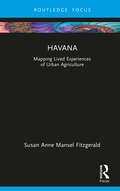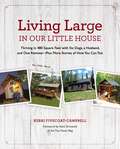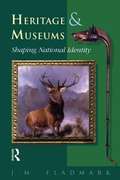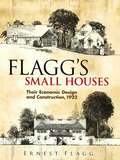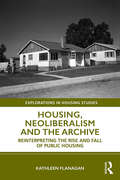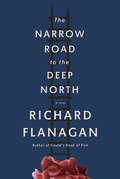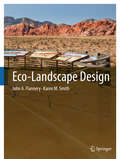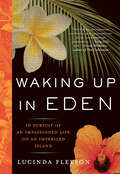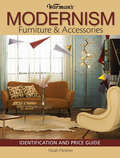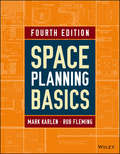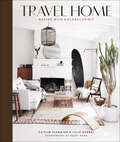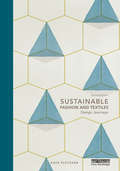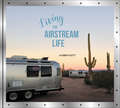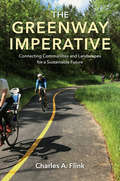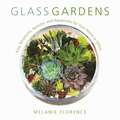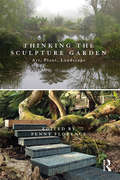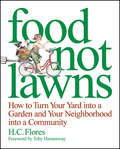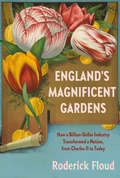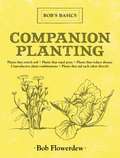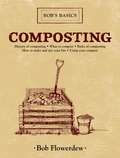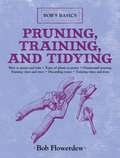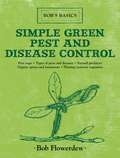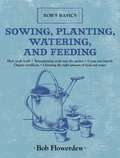- Table View
- List View
Havana: Mapping Lived Experiences of Urban Agriculture (Built Environment City Studies)
by Susan Anne FitzgeraldFollowing the crisis of the Special Period, Cuba promoted urban agriculture throughout its towns and cities to address food sovereignty and security. Through the adoption of state recommended design strategies, these gardens have become places of social and economic exchange throughout Cuba. This book maps the lived experiences surrounding three urban farms in Havana to construct a deeper understanding about the everyday life of this city. Using narratives and drawings, this research uncovers these sites as places where education, intimacy, entrepreneurism, wellbeing, and culture are interwoven alongside food production. Henri Lefebvre’s latent work on rhythmanalysis is used as a research method to capture the everyday beats particular to Havana surrounding these sites. This book maps the many ways in which these spaces shift power away from the state to become places that are co-created by the community to serve as a crucial hinge point between the ongoing collapse of the city and its future wellbeing.
Living Large in Our Little House: Thriving in 480 Square Feet with Six Dogs, a Husband, and One Remote--Plus More Stories of How You Can Too
by Kerri Fivecoat-CampbellTraditionally, the American Dream has included owning a house, and until recently that meant the bigger the better. McMansions have flourished in suburbs across the country, and as houses got bigger we filled them with more stuff. Kerri Fivecoat-Campbell had been subconsciously trying to live up to this American Dream when circumstances forced her and her husband into a 480-square foot house in the woods. What was supposed to be a writing cabin and guest house became their full-time abode and they quickly discovered that they had serendipitously discovered a better way of life. They realized that by living smaller, they were in fact, Living Large. They were not spending extra time cleaning and maintaining the house, but had the freedom to pursue their hobbies; they did not waste money on things they didn't need; and they grew emotionally (as well as physically) closer. Kerri and her husband realized that Living Large is less about square footage and more about a state of mind. As Kerri relates the story of her transformation to a "Living Larger," she also profiles more than a dozen other families living tiny house lives and offers practical advice for how you can too. The book will: *walk you through the financial advantages of small space living *help you define and find the right size house *teach you to scale down to the essentials to be surrounded only by things you love *show you how to make use of outdoor space *give tips on how to decorate judiciously and much more. Whether readers are inspired to join the tiny house movement or not, they are sure to be inspired to Live Large with less.
Heritage and Museums
by J. M. FladmarkPapers from the 1999 conference by the Museum of Scotland. Aims to generate international comparison and debate about interpretation and presentation of heritage assets, and to examine the role of museums in shaping national identity.
Flagg's Small Houses: Their Economic Design and Construction, 1922
by Ernest FlaggA celebrated New York architect and designer of the city's fabled Singer Building, Ernest Flagg (1857-1947) was most famous for his skyscrapers. But Flagg was also an ardent proponent of the well-designed single-family dwelling. As this classic treatise illustrates, he devised a variety of structural economies and ingenious innovations.Filled with 526 blueprints, photographs, and other illustrations, Flagg's Small Houses embraces modular designs, the use of ridge-dormers, and saving space, materials, and costs. Flagg offers advice on every corner of the home, from the practicalities of plumbing and heating to the aesthetics of color choices and landscaping designs. Modern designers, both professional and amateur, will find this book a timeless source of advice and inspiration.
Housing, Neoliberalism and the Archive: Reinterpreting the Rise and Fall of Public Housing (Explorations in Housing Studies)
by Kathleen FlanaganFrom the mid-1940s, state housing authorities in Australia built large housing estates to enable home ownership by working-class families, but the public housing system they created is now regarded as broken. Contemporary problems with the sustainability, effectiveness and reputation of the Australian public housing system are usually attributed to the influence of neoliberalism. Housing, Neoliberalism and the Archive offers a challenge to this established ‘rise and fall’ narrative of post-war housing policy. Kathleen Flanagan uses Foucauldian ‘archaeology’ to analyse archival evidence from the Australian state of Tasmania. Through this, she reveals that the difference between past and present knowledge about the value, role and purpose of public housing results from a significant discontinuity in the way we think and act in relation to housing policy. Flanagan describes the complex system of ideas and events that underpinned policy change in Tasmania while telling a story about state housing policy, neoliberalism and history that has resonance for many other places and times. In the process, she shows that the story of public housing is more complicated than the taken-for-granted neoliberal narrative and that this finding has real significance for the dilemmas in public housing policy that face us in the here and now.
The Narrow Road to the Deep North: A novel (Vintage International)
by Richard FlanaganAugust, 1943: Australian surgeon Dorrigo Evans is haunted by his affair with his uncle’s young wife two years earlier. His life, in a brutal Japanese POW camp on the Thai-Burma Death Railway, is a daily struggle to save the men under his command. Until he receives a letter that will change him forever.<P><P> A savagely beautiful novel about the many forms of good and evil, of truth and transcendence, as one man comes of age, prospers, only to discover all that he has lost.<P> Man Booker Prize winner
Eco-Landscape Design
by John A. Flannery Karen M. SmithThe ability to adapt to a changing environment has ensured the continued survival of the human race into the 21st century. The challenges to be faced in this century are now well documented by the United Nations Intergovernmental Panel on Climate Change. The effects of drought, melting polar ice and increased incidences of extreme weather events will impact on the diverse landscapes of the earth and a human population predicted to be 9 billion by the middle of the 21st century, a three-fold increase in less than one hundred years. This book provides a valuable insight into landscaping activity worldwide by those tasked with housing, feeding and nurturing all species that share the planet. Research for this publication reveals the growth of non-anthropized design philosophies, acknowledging that humanity cannot be indefinitely sustained if animal, bird and plant life are excluded. The precious resources of water and the air that we breathe are no longer taken for granted; rivers flowing through the world's mega-cities are now being cleaned, restored and given pride of place in the landscapes they flow through. Conservation projects provide evidence that even fragile island and desert landscapes can be protected from the negative impacts of population. Eco-Landscape Design demonstrates that an intelligent and thoughtful approach to landscape design can not only ensure survival, it can reap compound benefits and rewards far in excess of those originally envisaged.
Waking Up in Eden: In Pursuit of an Impassioned Life on an Imperiled Island
by Lucinda FleesonA woman journeys to Kauai to save Hawaii’s native plants: “Part history, part personal confession, part cautionary tale about environmental preservation” (Gioia Diliberto, author of Paris Without End). One day, Lucinda Fleeson quit her big-city newspaper job, sold her suburban house, and moved halfway across the world to the island of Kauai to work at the National Tropical Botanical Garden. Imagine a hundred-acre garden estate nestled amid ocean cliffs, rain forests, and secluded coves. Exotic and beautiful, yes, but as Fleeson awakens to this sensual world, exploring the island’s food, beaches, and history, she encounters an endangered paradise—the Hawaii we don’t see in the tourist brochures. Native plants are dying at an astonishing rate—Hawaii is called the Extinction Capital of the World—and invasive species (plants, animals, and humans) have imperiled this Garden of Eden. Fleeson accompanies a plant hunter into the rain forest to find the last of a dying species, descends into limestone caves with a paleontologist who deconstructs island history through fossil life, and shadows a botanical pioneer who propagates rare seeds, hoping to reclaim the landscape. Her grown-up adventure is a reminder of the value of choosing passion over security, individuality over convention, and the pressing need to protect the earth. And as she witnesses the island’s plant renewal efforts, she sees her own life blossom again. “[An] impeccably researched, beautifully told tale of how America’s most exotic locale transformed the life of an urban journalist.” —Gioia Diliberto “As she delves deep into the island’s history and ventures far into its delicate ecosystem, Fleeson undertakes her own personal and professional salvation, a spirited and daring pilgrimage that is both revelatory and enlightening.” —Booklist
Warman's Modernism Furniture and Acessories: Identification and Price Guide (Warman's)
by Noah FleisherThe cool designs, sleek lines and fashion-forward forms of the open and optimistic feel of the modernism furniture and design is as reflective of attitude as it is ingenuity. The enthusiasm and boundless hope of post-War 1950s America, not unlike our country's current eagerness for a shot of optimism, is represented in the pages of this beautifully illustrated, inspiring, and informative book. Warman's Modernism Furniture & Accessories features the furniture and designs that emerged during the prime of the movement, between 1945 and 1985. The collection of 1,000 rich and robust color photos, real-world auction prices and extensive descriptions make this a fundamental reference for anyone with an interest in modernism furniture.
Take Control of Home Security Cameras
by Glenn FleishmanLearn everything you need to know about home security cameras to plan, purchase, and install the best system for your needs for live access, security monitoring, privacy concerns, and affordability.
Take Control of Home Security Cameras
by Glenn FleishmanLearn everything you need to know about home security cameras to plan, purchase, and install the best system for your needs for live access, security monitoring, privacy concerns, and affordability.
Space Planning Basics
by Rob Fleming Mark KarlenConquer the complexity of interior design with a logical, methodical approach Space Planning Basics is a definitive introduction and principle resource for thousands of designers. With step-by-step methodology based on the author's several decades of design experience, this authoritative guide has become the de facto reference for an entire generation of designers. This updated fourth edition includes digitized drawings, diagrams, and matrices throughout, and newly added supplemental photographs. The text has been revised to reflect the latest developments in sustainable and universal design, including coverage of daylighting, benchmarking, LEED system standards, and green code issues. The companion website provides AutoCAD files, intrustor videos and matrices to give you a deeper real-world understanding of the design process. This book is perfect preparation for the NCIDQ exam. Proper space planning goes way beyond sketching a preliminary floor plan. Successful implementation includes a balanced integration of code compliance, system support, and adherence to the client's functional needs. Sustainability adds a new, important layer of complexity. This book shows you how to approach space planning in a way that ensures all considerations are met, and nothing gets lost in the process. Adopt an organized and comprehensive planning methodology Work effectively with dimensionally challenging spaces Consider building systems, codes, lighting, acoustics, and more Develop advanced skills and conquer new challenges Space planning encompasses many components and processes, making a comprehensive reference necessary for mastery of the field. Space Planning Basics is a thorough, methodical resource that gets you started on the right track, with plenty of room for creativity.
Travel Home: Design with a Global Spirit
by Caitlin Flemming Julie Goebel“A peek inside the homes of tastemakers . . . A masterclass in how to infuse the ideas and finds you scoop up on the road into your digs back home.” —ChairishA road map for bringing far-flung design ideas back home, Travel Home shows us how to curate interiors that reflect our favorite places and experiences in ways that are beautiful and authentic. Touring the homes of leaders in global design who share a deep affection for travel, the book explores interiors with influences as widespread as Marrakesh, Paris, Cuba, Tokyo, Portugal, and beyond. Vivid photography is supplemented with insightful essays, interviews, and hardworking tips for cultivating your own global home. For globetrotters and armchair travelers alike, Travel Home showcases the interplay between travel and design, revealing how we can take inspiration from the beauty we experience in the world and bring it into our everyday lives. “The book is a study of how travel informs our taste—and a beautiful illustration of the creative potential a mother-daughter partnership can yield.” —goop “Upon finishing Travel Home I felt inspired in the same way that I feel inspired after a big trip. It’s a book you’re going to want to take notes in, take pictures of, and share with your friends. It will be a book very well loved.” —Justina Blakeney, designer and New York Times-bestselling author of Jungalow“There are so many books about interiors, but this book is a genuine opportunity to get to know the people and the mentality behind their spaces.” —Nate Berkus and Jeremiah Brent, authors and television stars on Nate & Jeremiah by Design
Sustainable Fashion and Textiles: Design Journeys
by Kate FletcherFully revised and updated, the second edition of Sustainable Fashion and Textiles: Design Journeys continues to define the field of design in fashion and textiles. Arranged in two sections, the first four chapters represent key stages of the lifecycle: material cultivation/extraction, production, use and disposal. The remaining four chapters explore design approaches for altering the scale and nature of consumption, including service design, localism, speed and user involvement. While each chapter is complete in and of itself, their real value comes from what they represent together: innovative ways of thinking about textiles and garments based on sustainability values and an interconnected approach to design. Including a new preface, updated content and a new conclusion reflecting and critiquing developments in the field, as well as discussing future developments, the second edition promises to provide further impetus for future change, sealing Sustainable Fashion and Textiles: Design Journeys as the must-buy book for fashion and textiles professionals and students interested in sustainability.
Living the Airstream Life
by Karen FlettIllustrated with rare and exclusive images from the official company archives, an authoritative and entertaining guide to the wildly popular, beautifully designed luxury recreational vehicle that has become a cultural icon, embodying the American spirit of freedom and adventure—and the ideal in mobile living.With its distinctive silver-bullet shaped profile, the Airstream has been an integral part of the American recreational landscape for more than eighty-five years. Since the 1930s, thousands of Americans have used it as a personal canvas to paint their own unique story as they’ve traveled the road of life, and today, these stunning, nostalgia-laden vehicles are more popular than ever. In Living the Airstream Life, Karen Flett tells the unique story of the designers who have transformed the brand into a mainstay of American life and the dreamers who have found their home, and their heart, in an Airstream. Living the Airstream Life is a tour along the diverse roads aficionados have taken in chasing their Airstream dreams. Stunning color photographs featuring new and vintage versions and compelling stories capture the allure of the Airstream and offer advice and insight on the practicalities of adopting this lifestyle. With spectacular photography and compelling stories, Living the Airstream Life offers inspiration for those actively pursing the dream of life on the road—whether for permanent living or as a temporary escape from the daily grind—and everyone who wants to live vicariously through those who dare.
The Greenway Imperative: Connecting Communities and Landscapes for a Sustainable Future
by Charles A. FlinkTrailblazing greenway projects from vision to reality In this eye-opening journey through some of America’s most innovative landscape architecture projects, Charles Flink shows why we urgently need greenways. A leading authority in greenway planning, design, and development, Flink presents inspiring examples of communities that have come together to build permanent spaces for the life-sustaining power of nature. The Greenway Imperative reveals the stories behind a variety of multiuse natural corridors, taking readers to Grand Canyon National Park, suburban North Carolina, the banks of the Miami River, and many other settings. Flink, who was closely involved with each of the projects in this book during his 35-year career, introduces the people who jumpstarted these initiatives and the challenges they overcame in achieving them. Flink explains why open green spaces are increasingly critical today. “Much more than a path through the woods,” he says, greenways conserve irreplaceable real estate for the environment, serve as essential green infrastructure, shape the way people travel within their communities, reduce impact from flooding and other natural disasters, and boost the economies of cities and towns. Greenways can and should dramatically reshape the landscape of America in the coming years, Flink argues. He provides valuable reflections and guidance on how we can create resilient communities and satisfy the human need for connection with the natural world.
Glass Gardens: Easy Terrariums, Aeriums, and Aquariums for Your Home or Office
by Melanie FlorenceNot everyone can be Martha Stewart, and luckily you don’t need to be to create beautiful terrariums to display in your space or to give as a gift. With simple instructions and a relaxed and pleasant tone, Glass Gardens speaks to the beginner terrarium-maker as a best friend would over a cup of coffee or tea. You won’t find any overly elaborate or complicated projects here! With just a few supplies and a small amount of time, you’ll have a gorgeous centerpiece to display or give away.Learn how to create stunning, easy-to-maintain terrariums with cacti and succulents, as well as water terrariums (aquariums) with plants you can buy at your local pet store and air terrariums (aeriums), which are by far the easiest type of terrarium to create and keep alive.In Glass Gardens, you’ll be given lists of supplies you’ll need as well as information on where to find them in addition to tips and tricks about the best ways to keep your plants alive and thriving. Easy, step-by-step instructions and detailed photos will have you designing your own glass gardens before you know it.
Thinking the Sculpture Garden: Art, Plant, Landscape
by Penny FlorenceThis innovative book poses two, deceptively simple, questions: what is a sculpture garden, and what happens when you give equal weight to the main elements of landscape, planting and artwork? Its wide-ranging frame of reference, including the USA, Europe and Japan, is brought into focus through Tremenheere Sculpture Garden, Cornwall, with which the book begins and ends. Effectively less than 15 years old, and largely the work of one man, Tremenheere affords an opportunity to examine as work-in-progress the creation of a new kind of sculpture garden. Including a historical overview, the book traverses multiple ways of seeing and experiencing sculpture gardens, culminating in an exploration of their relevance as 'cultural ecology' in the context of globalisation, urbanisation and climate change. The thinking here is non-dualist and broadly aligned with New Materialisms and Material Feminisms to explore our place as humans in the non-human world on which we depend. Eminent contributors, including John Dixon Hunt, George Descombes, Bernard Lassus and David Leatherbarrow, approach these issues through practices and theories of landscape architecture; garden and art making; history and writing; and philosophy. Richly illustrated with over 100 images, including a colour plate section, the book will primarily appeal to those engaged in professional or academic research, along with sculpture garden visitors, who will find new and surprising ways of experiencing plants and art in natural and urban settings.
Food Not Lawns
by H. C. FloresGardening can be a political act. Creativity, fulfillment, connection, revolution-it all begins when we get our hands in the dirt. "Food Not Lawns" combines practical wisdom on ecological design and community-building with a fresh, green perspective on an age-old subject. Activist and urban gardener Heather Flores shares her nine-step permaculture design to help farmsteaders and city dwellers alike build fertile soil, promote biodiversity, and increase natural habitat in their own "paradise gardens. " But "Food Not Lawns" doesn't begin and end in the seed bed. This joyful permaculture lifestyle manual inspires readers to apply the principles of the paradise garden--simplicity, resourcefulness, creativity, mindfulness, and community-to all aspects of life. Plant "guerilla gardens" in barren intersections and medians; organize community meals; start a street theater troupe or host a local art swap; free your kitchen from refrigeration and enjoy truly fresh, nourishing foods from your own plot of land; work with children to create garden play spaces. Flores cares passionately about the damaged state of our environment and the ills of our throwaway society. In "Food Not Lawns," she shows us how to reclaim the earth one garden at a time.
England's Magnificent Gardens: How a Billion-Dollar Industry Transformed a Nation, from Charles II to Today
by Roderick FloudAn altogether different kind of book on English gardens—the first of its kind—a look at the history of England&’s magnificent gardens as a history of Britain itself, from the seventeenth-century gardens of Charles II to those of Prince Charles today. In this rich, revelatory history, Sir Roderick Floud, one of Britain&’s preeminent economic historians, writes that gardens have been created in Britain since Roman times but that their true growth began in the seventeenth century; by the eighteenth century, nurseries in London took up 100 acres, with ten million plants (!) that were worth more than all of the nurseries in France combined. Floud&’s book takes us through more than three centuries of English history as he writes of the kings, queens, and princes whose garden obsessions changed the landscape of England itself, from Stuart, Georgian, and Victorian England to today&’s Windsors. Here are William and Mary, who brought Dutch gardens and bulbs to Britain; William, who twice had his entire garden lowered in order to see the river from his apartments; and his successor, Queen Anne, who, like many others since, vowed to spend little on her gardens and instead spent millions. Floud also writes of Frederick, Prince of Wales, the founder of Kew Gardens, who spent more than $40,000 on a single twenty-five-foot tulip tree for Carlton House; Queen Victoria, who built the largest, most advanced and most efficient kitchen garden in Britain; and Prince Charles, who created and designed the gardens of Highgrove, inspired by his boyhood memories of his grandmother&’s gardens. We see Sarah, Duchess of Marlborough, who created a magnificent garden at Blenheim Palace, only to tear it apart and build a greater one; Deborah, Duchess of Devonshire, the savior of Chatsworth&’s 100-acre garden in the midst of its 35,000 acres; and the gardens of lesser mortals, among them Gertrude Jekyll and Vita Sackville-West, both notable garden designers and writers. We see the designers of royal estates—among them, Henry Wise, William Kent, Humphrey Repton, and the greatest of all English gardeners, &“Capability&” Brown, who created the 150-acre lake of Blenheim Palace, earned millions annually, and designed more than 170 parks, many still in existence today. We learn how gardening became a major catalyst for innovation (central heating came from experiments to heat greenhouses with hot-water pipes); how the new iron industry of industrializing Britain supplied a myriad of tools (mowers, pumps, and the boilers that heated the greenhouses); and, finally, Floud explores how gardening became an enormous industry as well as an art form in Britain, and by the nineteenth century was unrivaled anywhere in the world.
Companion Planting: Bob's Basics (Bob's Basics)
by Bob FlowerdewAccording to Flowerdew, the key to successful organic gardening is working with nature, rather than against it, to get your plants to thrive. This practice is called companion planting, and it is explained in this volume with a style that is both no-nonsense and reader-friendly. Topics range from plants that compete for nutrients to plants that enrich their soil for future crops. Gardeners of all levels will learn from Companion Planting and their gardens will benefit from happy and healthy plants.
Composting: Bob's Basics (Bob's Basics)
by Bob FlowerdewThe best fertilizer for your organic garden is compost. It's easy to make, economically friendly, and teeming with nutrients. In this highly useful installment of his Bob's Basics series, Bob Flowerdew takes you through all the steps necessary to make a rich compost pile best suited to your needs. Composting is a highly comprehensive guide that goes over all the steps, from building a bin to collecting material to maintaining and adding to the finished product.
Pruning, Training, and Tidying: Bob's Basics (Bob's Basics)
by Bob FlowerdewWhat sets Bob Flowerdew's Pruning, Training, and Tidying apart from other books on the subject is that it does not advise pruning every single plant in your garden. Rather, as Flowerdew puts it, this guide explains the simplest basics of pruning, and how to get admirable results without obsessing over the growing pattern of every plant. Whatever you are growing, and whatever your garden looks like, Pruning, Training, and Tidying will help you to keep your garden beautiful and functional.
Simple Green Pest and Disease Control: Bob's Basics (Bob's Basics)
by Bob FlowerdewOne of the biggest challenges of growing an organic garden is keeping away pests and diseases without using harmful pesticides. But as Bob illustrates in this necessary guide for any organic gardener, it is possible to keep your garden chemical-, pest-, and disease-free all at once. A master at growing organic produce, Flowerdew outlines the best natural methods, from building effective physical barriers and pest traps out of plants and recycled materials to using such natural pest predators as birds, reptiles, and even other bugs.
Sowing, Planting, Watering, and Feeding: Bob's Basics (Bob's Basics)
by Bob FlowerdewYou most likely already know that nurturing a planted seed is necessary for growing a healthy plant. But how do you know the right amount of water to give? What are the best kinds of organic fertilizers? How can you plant a seed to set it on the right track for optimal growth? In Sowing, Planting, Watering, and Feeding, Bob Flowerdew guides you through these and other quandaries, and provides practical advice for dodging common mistakes gardeners make when nurturing their seedlings.
